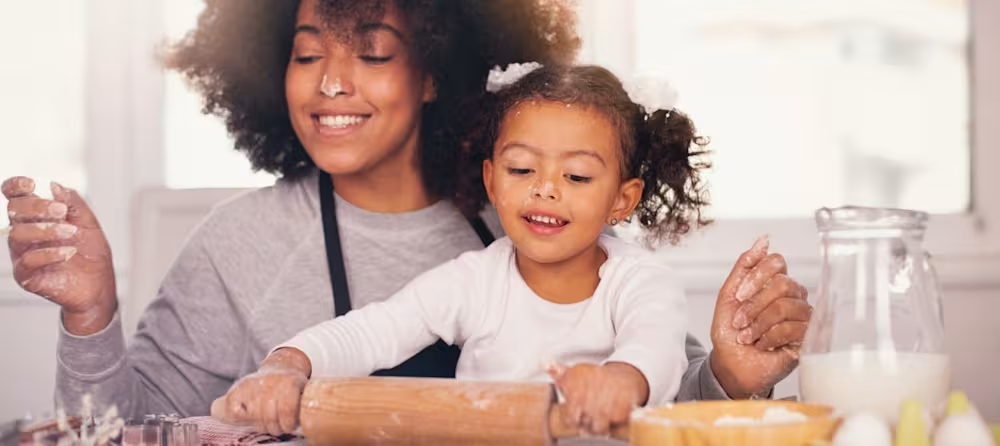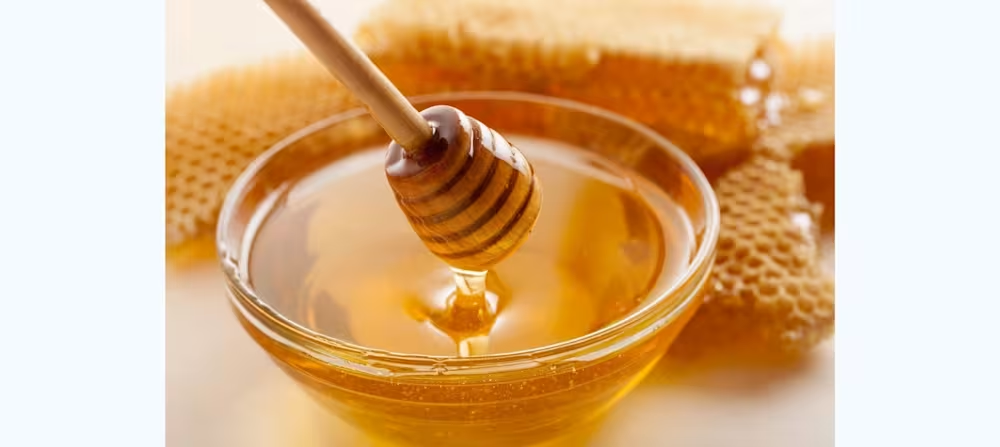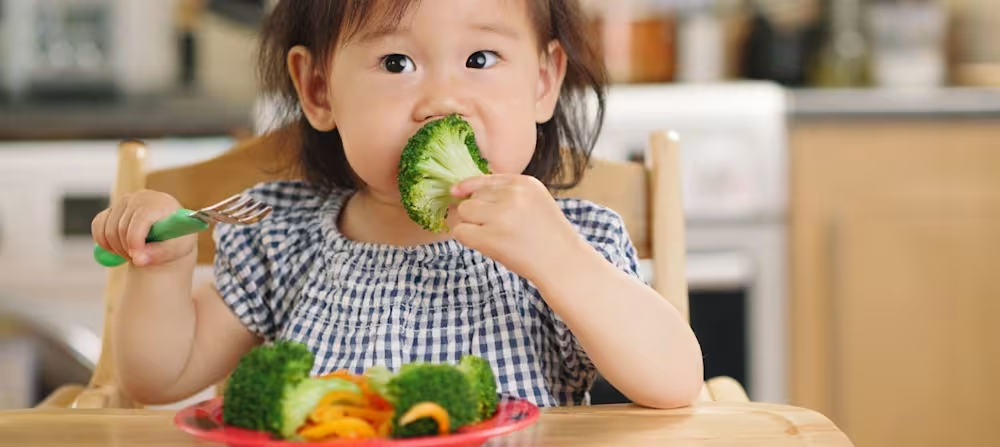Trick or treat tips for a fun and healthy Halloween
Updated Oct 02, 2025

What’s the scariest part of Halloween? For parents, it’s probably not ghosts, goblins, or haunted houses, but it might be the thought of their kids eating so. much. candy. Have you ever seen a toddler crash from a sugar rush? Spooky! Deciding on how to handle Halloween treats is up to you - you know your family best! But in case you are looking for some guidance on best practices, keep reading.
When can I let my child eat candy?
There is no agreed-upon age recommendation for allowing children to eat candy. However, expert groups such as the American Academy of Pediatrics [] and the 2020-2025 Dietary Guidelines for Americans [] recommend avoiding added sugar for children under the age of 2. For kids over 2, it’s recommended to keep added sugar under 10% of daily calories which equals roughly 25 grams or 100 calories for a two-year-old.
In reality, as hard as parents may try, it can be difficult to avoid all added sugars until their child turns 2, especially when it comes to holidays or if there are older siblings in the picture. In the case of candy, many babies under age 1 are likely not skilled enough eaters to handle most candy, but 1 - 2 year olds are more likely to be aware of Halloween candy and want to try it.
How much candy should my child eat?
Deciding how much candy your child should eat on Halloween and the days following is a personal decision. Everyone’s comfort level with candy is going to be different, and you get to decide what’s best for your family. However, the following guidelines may be helpful to consider when making a decision.
If possible, avoid restriction
Generally speaking, the more we try to restrict something, from ourselves or our kids, the more appealing it becomes. And research supports this! Studies show [] the more food is restricted in children, the more obsessed they become with it and the more they eat it when given a chance.
Practice a division of responsibility
Children are born with an innate sense [] of how much they need to eat to grow optimally for their body size. Parents can nurture and encourage their children’s natural abilities by following a division of responsibility in feeding -- including Halloween candy! Your role as the parent is to decide when, where and what to feed and your child decides if they are going to eat and how much they will eat.
Set up a game plan ahead of time
It’s much harder to make a sound decision at the moment, so have a game plan ahead of time. Be specific. Decide how much candy you feel comfortable with your kids eating on Halloween, the day after, the week after, etc. Consider what you will do with any excess candy.
Kids’ interest in Halloween candy tends to fizzle out if it isn’t put on a pedestal, so try to keep the experience as neutral as possible. Enjoy the holiday and move on! Just don't forget to give those teeth an extra good brushing afterward.

What should I do with excess candy?
Even with a game plan in place, many families feel they have an excess of candy after Halloween. Here are a handful of ideas on how to deal.
Simply throw it away.
Donate to a local collection. Many dentist offices will collect excess candy.
Have your child trade extra candy for a small toy or experience.
Freeze it for later use such as holiday baking.
Use it to decorate a holiday gingerbread house.
Bring it to your workplace.
Safety hazards in Halloween treats for toddlers
Sugar isn’t the only thing to consider when it comes to Halloween candy. Safety is equally important, especially for babies and toddlers. Certain candies may pose a choking risk or contain common food allergens. Additionally, eating candy while trick-or-treating, walking, running or playing can increase the risk of choking. It’s best to enjoy treats sitting down at home! And for toddlers, stick to soft sweets that dissolve quickly.
Common choking hazards include:
Hard candy (Lifesavers, Jolly Ranchers, lollipops, Gobstoppers)
Small candies (M&Ms, jelly beans, Nerds, candy corn)
Chewy candy (Starburst, Skittles, fruit snacks, Sour Patch, caramel)
Candy with whole nuts (Snickers, Peanut M&Ms, Payday, Baby Ruth)
Caramel apples
Popcorn
Small non-food items (candy wrappers, stickers, small toys, temporary tattoos)
Of course, an adult should always check children’s treats before they eat them. According to the American Academy of Pediatrics [], candy tampering is rare, but it can happen. It’s recommended to throw away any spoiled, unwrapped, or suspicious-looking items.

Trick or treat tips that won’t spoil their appetite
Follow your normal meal/snack schedule
As much as possible, stick to your normal meal and snack schedule on Halloween or other days you may be celebrating. This provides kids with a dependable time to fill their bellies and they won’t go into celebrations overly hungry.
Offer a balanced meal or snack before trick-or-treating.
Make balanced blood sugar and fullness your goal prior to trick-or-treating. Don’t force kids to eat anything, but it doesn’t hurt to provide some favorite foods you know they’ll fill up with. Try to include protein, fat, and fiber foods if possible.
Enjoy treats at home after trick-or-treating
Waiting to eat treats at home allows kids to eat more mindfully instead of eating on the go. It also lowers the risk of choking. Take it a step further and enjoy the candy haul with a healthy meal or snack reducing the risk of a sugar rush! A cup of milk offers blood-sugar balancing protein and fat plus tastes good with the sweet stuff.
Keep hydrated while on the go
Bring a water bottle along during trick-or-treating and offer sips every so often. Sometimes thirst gets mistaken for hunger so staying hydrated may reduce the risk of overeating later.
Make a plan for excess candy
After Halloween is over, set up a plan for when candy will be served. Is it available for a snack? With lunch? Deciding on when it will be eaten allows your child to feel like their intake isn’t restricted but allows you to keep candy binges at bay.
Healthy Halloween treat alternatives
While there tends to be a lot of emphasis on candy during Halloween, especially for kids, it is not needed to celebrate the holiday! A handful of ideas for non-food treats as well as alternative celebrations for babies and toddlers are broken down below.
Non-food treats for Halloween
Stickers
Mini Playdoh
Bubbles
Pencils/pens
Glow sticks
Bouncy balls
Noisemakers
Spider rings
Mini notepads
Temporary tattoos
Mini erasers

Halloween treats for babies
For many babies celebrating their first Halloween, candy may not even be an option as babies do not start eating solids until around 6 months of age. Beyond that, older babies tend to not have the eating skills required to handle most candy. So maybe forget the candy for this age. Get an adorable costume and if your baby does eat, try making or at home.
Halloween treats for toddlers
Toddlers may start to become more aware and interested in Halloween candy around age two or three. Consider making fun alternative treats at home such as or (add raisin eyes and pretzel legs). You could also make Halloween-themed cupcakes or cookies at home.
Trick or treat tips FAQ
Share article:
Note: The content on this site is for informational purposes only and should not replace medical advice from your doctor, pediatrician, or medical professional. If you have questions or concerns, you should contact a medical professional.






